Contents
What could social defence achieve?
The Canberra social defence project
Students, academics, unemployed
Suggestions for further action
The Colonel's day
The Colonel sat crouched and impotent in a corner of the lift. He held his head in his hands. His wristwatch ticked out the minutes into his left ear; at least that small machine was working!
Since the lift had quietly stopped between floors, the Colonel had been sitting like this for almost an hour. On breaking the square of glass marked "Emergency only", he had found nothing behind it. Whatever should have been there had been removed. The guard posted in the foyer was oblivious to all of this; the guard accompanying the Colonel sat crouched and impotent in the opposite corner of the lift.
It had not been a good day. The Colonel's pre-recorded proclamation had been scheduled for broadcast at 10am. Lucky citizens who had tuned in at 10am to the one official radio station were treated to an episode of The Goon Show. Somehow, somewhere, tapes had been muddled.
The Colonel was not pleased. He resolved to broadcast the proclamation live at midday. The radio station was to begin announcing this to the population at once. Six kilometres from the station, the Colonel's limousine shuddered to a stop. It seemed that someone had neglected to check the radiator. It may have taken hours to commandeer a passing car. Petrol was not issued to most citizens and there was not another motor vehicle in sight. The Colonel and his guards had begun to walk. A citizen whistled by on a push-bike. Was she laughing, or was it the rattle of her wheels over roads that seemed lately to be in a constant state of disrepair?
The Colonel's watch relentlessly continued to tick. Suddenly the lift was shaken by a more violent, organic sound. "Sorry Sir," the guard winced, "canteen food's been a bit odd."
Oh, it was not a good day!
Something was going on, the Colonel knew. These days were becoming more frequent. But how to stop them? Those responsible were invisible. The faces of the citizens were all blank. The Colonel had watched their faces for months. Who were the saboteurs, the conspirators? Everyone and no one. The Colonel was never at ease. He had begun to lose sleep and was often short-tempered with his own soldiers. Even their faces had begun to acquire that closed expression.
The Colonel decided that until rescue, he would take this opportunity to relax. Apart from the threat posed by one flatulent guard in a confined space, he felt relatively safe. But what was that? Violins? Yes, it was! A stream of Musak began to curl down from a speaker concealed somewhere within the ceiling of the lift. The volume increased to a merciless, distorted bleating. It did not stop. The Colonel ground his teeth, covered his ears and crouched lower in his corner. It was not a good day.
INTRODUCTION
What is social defence?
Social defence is nonviolent community resistance to aggression as an alternative to military defence. It is based on widespread political, economic and social noncooperation in order to oppose military aggression or political repression. It uses methods such as boycotts, refusals to obey, strikes, demonstrations, and setting up of alternative social, political and economic institutions.
Social defence is based on the principle that no regime - whether democracy or military dictatorship - can survive without the passive support or nonresistance of a large proportion of the population. Since social defence relies on resistance by large sections of the population, it can be considered to be the nonviolent equivalent of guerrilla warfare.
The methods of social defence aim to promote disunity and to weaken morale in the aggressing forces and country. This includes direct appeals to enemy soldiers and to the civilian population in the aggressor country as well as the example of the nonviolent resistance itself. The appeal of the resistance is bolstered by its broad base of support, by its nonviolence and by its justice.
Social defence needs to be supplemented by social attack, which involves the use of nonviolent methods to oppose and undermine oppressive and militaristic regimes elsewhere. An important part of social attack is support for groups in foreign countries using nonviolent struggle against their repressive governments.
Social defence is not guaranteed to be successful, just as military defence is not automatically successful. Its effectiveness can be improved by planning and practice in advance. Although social defence is based entirely on nonviolent methods, violence and suffering caused by the aggressors are still likely. Social defence is not an easy alternative.
What could social defence achieve?
Slow the arms race
The rhetoric of those who advocate spending money on weapons is that military hardware is needed in order to deter potential aggressors or invaders. But is the goal of deterrence best achieved by expenditure on weapons? After a great deal of military expenditure by many governments, the threat of war is as great as ever. Nuclear weapons pose a major threat to humanity.
Increased expenditure on military forces and armaments often does nothing to increase security, because other governments respond by increasing their military expenditures. That is what military races are all about. The potential mutual destructive power increases and no one is safer.
Reduce the threat of invasion
As an alternative to military defence, social defence could reduce the threat of invasion in a number of ways.
First, other governments cannot pretend that their military arsenals are for defensive purposes if their opponent relies on social defence and has no arms. It becomes harder to convince soldiers of the justice of their government's war if they are attacking an unarmed population.
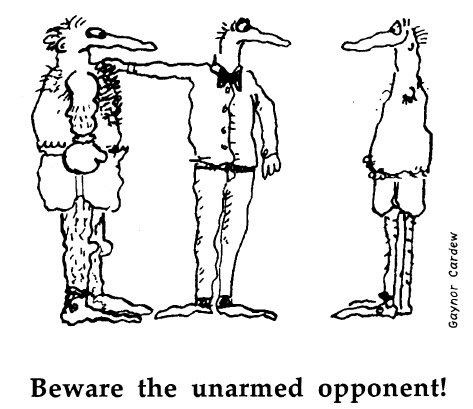
Second, because there are no military targets, nuclear attack and aerial bombing become less likely. The notion of pre-emptive attack becomes meaningless.
Third, if social defence is seen by potential aggressors as being well coordinated and strong, the estimated cost of an invasion escalates. Because social defence relies on broad-based support, it is extremely difficult to overcome: as long as there are committed people there is resistance. Historical evidence suggests that social defence could be as effective as military methods in deterring or resisting attack if as much money and energy were devoted to nonviolent means of resistance as are now devoted to violent methods.
Reduce suffering
Adoption of social defence as an alternative to military defence can reduce suffering in a number of ways. First, the money now spent on weapons manufacture and testing can be spent on more socially useful projects.
Second, by reducing the threat of war the potential suffering is also reduced. Third, in the event of invasion or military takeover, social defence over a wide area makes pointless the use of many weapons unsuited to combating such defence, such as nuclear weapons.
Social defence has a further tendency to reduce suffering since it is difficult for an aggressor to gain support for the use of violence against a population defending itself in a totally nonviolent manner. Thus large scale and indiscriminate violence is less likely.
Guard the guardians
The existence of military forces is normally justified by the threat of 'enemies'. But one of the greatest dangers to freedom and democracy in many countries today is the military forces themselves. If military forces take over the government, who will stop them? Who guards the guardians?
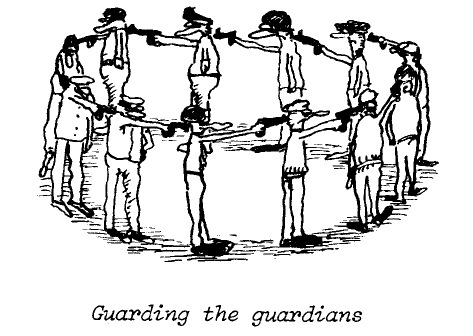
With social defence this problem does not arise. Social defence is based on widespread popular participation and so can replace the dependence on a professional defence force. In the meantime, the nonviolent methods used against a foreign aggressor can also be used against local military forces that try to take power, as in the case of the Kapp Putsch and the Algerian Generals' Revolt. For these reasons, social defence is a form of defence most compatible with the ideals of freedom and democracy.
There are several historical examples that illustrate the potential of social defence.
The Kapp Putsch
On 13 March 1920 in Berlin, there was a putsch (military takeover) led by General von Lüttwitz. The extreme right-wing Dr Wolfgang Kapp became Chancellor. Commanders of the German army refused to support the elected government and took no action against the putsch. It was left to the people to take action.
Germany's Weimar republic had been set up after the country's defeat in World War I. The government in 1920 was led by President Friedrich Ebert. In the wake of the coup, the government fled from Berlin to Stuttgart, from which it encouraged resistance by noncooperation.
When the Kappists took over two pro-government newspapers, all Berlin printers went on strike. The Ebert government called for a general strike throughout Germany. Support for the strike was overwhelming, especially in Berlin, and included groups from most political and religious orientations.
Opposition by civil servants was also crucial in opposing the coup. Officials in government bureaucracies refused to head government departments under Kapp.
Noncooperation ran deep. Bank officials refused to honour cheques presented by Kappists unless they were signed by appropriate government officials. But not one such official would sign. Typists were not available to type proclamations for the Kappists.
Kapp foolishly alternated between making concessions and attempting crackdowns, neither of which produced support. As his weakness became more obvious, opposition increased. Some military units and the security police declared their support for the legal government. After only four days, Kapp resigned and fled. With the collapse of the putsch, the Ebert government could once again rely on the loyalty of the army.Czechoslovakia 1968
In the 1960s, a number of reforms were made in Czechoslovakia that reduced the repressive aspects of state socialist rule. These moves - so-called 'socialism with a human face' - were strongly supported by the Czechoslovak people and government, but bitterly opposed by the Soviet rulers. In August 1968 a Soviet military invasion of Czechoslovakia was launched, with the expectation of quickly installing a pro-Soviet government. There was no military resistance to the invasion, and it has been estimated that any such resistance could only have been sustained a few days.
Quite spontaneously, the Czechoslovak people, from the political leadership to the workforce, united in nonviolent resistance to the occupation. This slowed and obstructed the Soviet occupation considerably. The clandestine radio network - designed as a backup in case of a NATO invasion - played a crucial role. It convened the Extraordinary Fourteenth Congress of the Czechoslovak Communist Party, called strikes, gave tactical instruction on street confrontations, requested rail workers to slow the transport of Soviet jamming equipment, cautioned against rumours, and counselled nonviolent resistance. Due to the unified civilian resistance, to the lack of a pro-Soviet government and to the demoralisation of Soviet troops, directives were issued from Moscow offering reforms and other concessions.
The Czechoslovak leadership considered these offerings and consequently adopted a more cooperative stance with the Soviet leaders than had the previously unified defence network. Further noncooperative acts were now without official sanction and as the Czechoslovak position weakened, the Soviet forces consolidated the occupation, removing the 'unnecessary' concessions. Nevertheless, full Soviet political control was not achieved until April 1969.
Because Soviet economic and political interests in Czechoslovakia were so strong, long-term resistance, either military or nonviolent, would have been very difficult to sustain. Although the reforms achieved in Czechoslovakia prior to August 1968 were lost, the nonviolent Czechoslovak resistance was successful in delaying and frustrating achievement of Soviet aims, with very little loss of life. Furthermore, the resistance and its nonviolence made it clear throughout the world who was the aggressor and this greatly weakened Soviet influence over communist parties in Western countries.
Australian scenarios
Scenario 1. A hostile military power launches an attack on Australia and invades several capital cities. The invaders move quickly to gain control of key industries for assisting their operations. While the Australian army continues to fight on several fronts, the civilian population is quelled by indiscriminate killings. Eventually the Australian military forces surrender after the invader demonstrates use of a potent biological weapon. What can the Australian people do now?
Scenario 2. A nuclear war breaks out in the northern hemisphere and in the course of hostilities US bases in Australia are hit by nuclear warheads. In response a state of emergency is declared and elections are suspended indefinitely. The government uses the situation as a pretext for eliminating opposition groups and 'dissidents'. There are no immediate prospects for a return to parliamentary democracy. What can the Australian people do now?
Scenario 3. Severe economic dislocation follows the collapse of the United States dollar. Unemployment in Australia soars and civil unrest leads to street violence. Military and police powers are expanded and civil rights are curtailed. Isolated terrorist opposition leads to even more repressive government measures. What can the Australian people do now?
Defence analysts say that there is no power (except for the United States) with the ability to launch an invasion of Australia in the foreseeable future. But even if the dangers are remote, invasion or government repression at some time in the future cannot be ruled out. What can be done to help prevent these from happening? What can the Australian people do?
One answer is social defence.
Canberra Peacemakers
The group Canberra Peacemakers was set up at the beginning of 1979. At that time it was the only peace group in Canberra, and the group did such things as organise Hiroshima Day activities. Another focus was nonviolent action training: preparing people to engage in nonviolent action, whether this is working with community groups in local neighbourhoods, speaking on city streets or engaging in civil disobedience such as in southwest Tasmania.
The other main area of interest was social defence. Since 1982 other groups have been established in Canberra to organise rallies and run nonviolent action training. As a result the major focus for Canberra Peacemakers has become social defence.
The group has always been fairly small. Typically there are 5 or 6 active members at any given time out of a base of 10 or 12. There is no financial membership. The group's income comes almost entirely from donations, with some income from sales of literature.
Who are the members? They have included single mothers, Quakers, scientists, students and public servants, among others. Their ages range widely.
The group normally has a business meeting every week. Occasionally evening discussion meetings are held. There are no officers. Decisions are made by consensus.
Here are some of the initiatives the group has made on the issue of social defence.
* Giving talks to other groups, on radio and at conferences.
* Producing written materials. The most important item has been a broadsheet entitled 'Social defence', first printed in 1982. It has been distributed throughout Australia and overseas and reprinted in revised form in both Canada and Britain. In 1984 a Russian version and translation of the social defence broadsheet was produced by Canberra Peacemakers, and distributed to various groups who are able to get copies into the Soviet Union. In 1985 an Italian version was prepared by a group in Italy.
In 1983 a leaflet about social defence specifically designed for public servants was produced.
* Distributing written materials. Stalls have been held at rallies, fairs, conferences and other venues. Information has been provided to many individuals and groups.
* Producing a slide show. In 1984 a slide show about social defence was produced. The show includes a hypothetical nonviolent resistance to an invasion of Canberra, plus historical examples of nonviolent action. Producing the show involved script writing, searching for historical photos, photographing, sequencing and production.
* Holding workshops. Workshops lasting an afternoon, a day or weekend have been held to consider what social defence is, how it can be promoted and how to do this. Nonviolent action training methods have been used, including brainstorms, small group workshops, role plays and simulations.
* 2XX project. In 1981 members of Canberra Peacemakers, in conjunction with some workers at community radio station 2XX, looked at what workers and supporters of 2XX could do to nonviolently oppose threats to the station. The project included preliminary study, a weekend workshop and production of an information sheet for 2XX studios.
* Community action group projects. A workshop was held in 1983 involving several community groups, including a screen-printing collective, members of Christian communities, and environmentalists. Each group was encouraged to develop a project relating its own interests to social defence. For example, the environmentalist group developed a pilot survey on self-reliance in a suburban neighbourhood.
The Canberra social defence project
The idea for this project grew out of some of the activities mentioned in the previous section. While making the slide show we had scripted and acted out a hypothetical nonviolent resistance to an invasion of Canberra. After completing the slide show it was agreed that we should pursue the idea and develop a plan of how nonviolent methods could be used by different sectors of Canberra's population to oppose a military invasion or political coup. To develop such a plan we envisaged a process of interviewing a range of Canberra people and collecting information and ideas from them. We planned to use this information to write a booklet that could be used by other groups wanting to develop a social defence plan for their city.
The project began in April 1984 with a one-day workshop to plan the goals, methods and time scale of the project. We used several nonviolent techniques to assist us in this planning. For example, brainstorms were used to identify the groups and individuals in the community that we wanted to contact. (Brainstorming is a method for generating lots of ideas in a limited amount of time.) After identifying these groups we role-played talking to them about social defence. Role-playing is an improvised drama in which the players take on roles to prepare themselves for the 'real' situation.
Using these methods we identified four major groupings of people that we wanted to interview. They included (1) public servants, (2) information systems workers (for example, journalists, radio broadcasters, computer programmers), (3) tradespeople and (4) suburban dwellers, students and social activists.
In carrying out the interviews we also gained experience in talking to people about social defence. We felt that the process of collecting information would be just as useful as the end result of the project.
We decided that we could obtain more useful information by interviewing friends and acquaintance - especially those with some prior knowledge of social defence - than by formally approaching representatives of each group. So under each group heading we compiled lists of people we knew personally.
A short questionnaire was drawn up as a guideline for the interviews.
How the interviews were carried out
Most interviews were conducted by two people: an interviewer to ask questions and a note-taker to record the interview. These two roles were regularly rotated within pairs.
To begin with, the person being interviewed was asked to read the public service leaflet and consider the list of nonviolent actions. We found that asking people to comment on these actions made a good starting point and sparked off other ideas. The extent to which the leaflet was used varied with each interview. In some of the more successful interviews it became redundant.
Interviews lasted between 30 minutes and 2 hours, but usually about an hour.
After each interview the written record was typed and circulated amongst Canberra Peacemakers. To preserve the anonymity of each person interviewed the record of the interview was identified only by the date and occupation: for example "16 January, public servant".
Possible nonviolent actions
A. Symbolic actions
- Circulate petitions, make speeches, use slogans, display banners.
- Discuss the situation with those in charge to change opinions.
- Make public statements.
- Offer denials to those who justify the aggression.
- Pass out information.
- Communicate with groups in other countries. Use short-wave radio.
- Engage in symbolic protests, such as wearing badges or other symbols of resistance.
- Obtain support through trade unions.
- Join or help organise demonstrations, vigils and pickets.
B. Noncooperation
- Stay at home.
- Leak information.
- Leave confidential information around.
- Resign.
- Report sick.
- Go on strike.
- Go slow on purpose: feign incompetence, 'misunderstandings', 'mistakes'.
- Disobey orders, delay responses to orders.
- Refuse to type or distribute official documents.
- Give false information.
- Alter manifestos.
- Lose keys.
- Chauffeur leaders to the wrong destination.
- Alert dissidents of arrests or spying.
- Boycott individuals, goods or institutions.
C. Nonviolent intervention and alternative institutions
- Work-in, sit-in (nonviolent obstruction and occupation).
- Destroy or misplace information and records (for example on dissidents targeted for arrest).
- Scramble telephone systems.
- Change offices or houses.
- Insert bugs in computer programmes.
- Demagnetise computer tapes vital to rulers.
- Take out vital screws in machinery, etc.
- Set up parallel communications systems: radio broadcasts, printing presses, etc.
- Use houses and other facilities to do underground work.
- Lend offices to opposition groups.
- Organise food distribution to the needy.
- Send large welfare cheques to those who can use them.
- Set up child care.
- Set up alternative transport.
- Use networks of playgroups, unemployment action groups and other community groups.
- Organise meetings.
- Go on fasts.
- Harbour dissidents.
- Refuse to pay taxes.
- Withdraw bank deposits.
Questions asked of people interviewed
- Do you think these methods will work?
- Are there any technical details about these methods that you think are important?
- Do you have any other ideas for nonviolent resistance?
- What facilities, skills and preparations would be useful for any of the above methods?
- Are any of the methods especially risky?
- Which methods are likely to be most effective?
- How could people organise themselves to carry out the nonviolent resistance? (How would decision-making take place? How would communications be arranged? Would people be organised? If so, how?)
WHAT PEOPLE CAN DO
On the following pages is an outline of the actions people in Canberra could take to nonviolently oppose an invasion or coup. Although we have taken into account the comments by people we interviewed, the treatment here is our own.
There are many different actions that can be taken in a social defence programme, and many different situations in which to take action. To provide some order to this diversity, we have divided the community into a number of different groups, mainly following occupations: public servants, tradespeople, communications, etc. In practice many individuals will fall into two or more of these categories or perhaps not into any category that we list. The categories are not meant to be rigid, but simply to divide the discussion into manageable sections.
Within each category, we itemise a number of different actions - such as making public statements or leaking information - and discuss their advantages and disadvantages in different circumstances. The first category is public servants, who make up the largest group of paid employees in Canberra. As we move on to other categories, we only mention new methods or considerations. The discussion of actions by public servants therefore is much longer than for other groups simply because they are discussed first.
There are a number of groups we do not discuss here, including shopkeepers and shop assistants, office workers in private enterprise, members of the armed forces, children, church congregations, transport workers, police and farmers. We have not attempted to cover every possible group but rather to give an idea of some of the things that can be done by selected groups. In any case, in the end it will be up to people themselves - who are inevitably the most knowledgeable about what they can achieve - to elaborate possible courses of action and decide on what is best for them to do in the circumstances.
Public servants
Canberra, a city of about 250,000 people, is the capital of Australia and was planned specifically to be the seat of national government. It is home to the majority of the departments and statutory bodies of the national government. The city is relatively new and has undergone rapid development and expansion since the early 1960s when government departments were moved to Canberra from other cities. Few adult residents were born in Canberra, and there are many recently built suburbs.
Those who work in government departments are known as public servants. There are over 30,000 of them, forming the largest single category of workers in Canberra. Other areas of major employment are education and the service, retail and related industries. There is only a small amount of secondary industry.
Public servants are divided into four 'divisions'. The first and second divisions are relatively small and include heads of departments, heads of divisions and branches within departments. Administrative clerks of various grades make up the third division. The fourth division is composed of ancillary staff such as typists, secretaries and filing clerks.
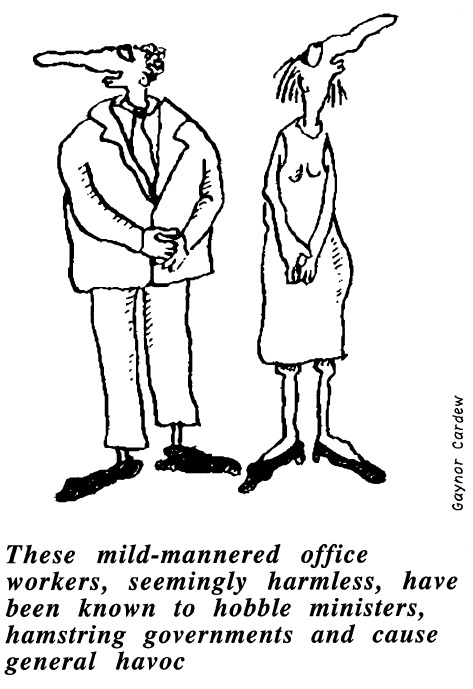
Canberra has three major commercial centres designed to service different suburban areas of the city. There are large blocks of government offices in all three centres, although some departments are located elsewhere. Car ownership is very high and most workers drive to work. The only local public transport is the bus system run by the government.
There are many nonviolent actions that could be used by Canberra public servants against a repressive regime.
* Discuss the situation with others. The success of a nonviolent resistance depends crucially on the degree of popular support it has. An obvious but essential part of building this support is talking to other people and discussing the issues, such as the implications of resistance or non-resistance, the feelings of other people and the possibilities for action. If the regime takes control of mass communications, alternative views will not be broadcast. Many potentially sympathetic people may simply be unaware of what is at stake and not know why it is important to resist.
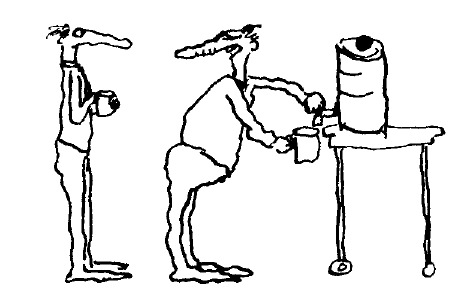
One aim would be to sway those at top levels in the public service, who in many situations would be more likely to side with the regime or to carry on with business as usual since they have more to lose - money, position and status - by resisting. Only some people, such as those at a similar level or good friends, are likely to be able to sway public service elites. For a low-ranking person to attempt such a discussion might be a waste of time or place them at risk.
In discussing the situation with others, a person must be sensitive to interpersonal relations. Often rational argument may not be sufficient to convince people. They may be more responsive to a plea to self-interest, or to a discussion couched in terms of their general beliefs, or to a feeling about what others are doing. It may be more useful to encourage those who are already sympathetic to become active than to convert those who are hostile.
Political discussions are not alien to the public service. Many public servants have strong political views, and for example many were politically active in November 1975 when the Labor government was dismissed in a 'constitutional coup'.
* Make public statements. Public statements by government workers can be quite powerful, since they can expose dissatisfaction normally hidden from the public. But great care needs to be taken.
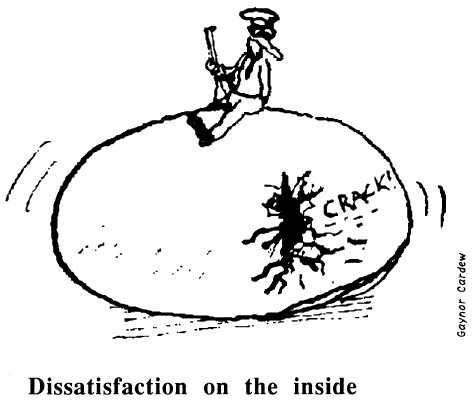
Public statements by individual public servants obviously put them at risk and are not advisable for anyone who can continue to be more effective to the resistance on the job. Top public servants such as department heads may be in a more favourable position. For them to speak out opposing a takeover would be a severe blow to the regime. Any reprisals would be impossible to hide from public view and hence could be counterproductive for the regime.
Much safer and more effective than statements by individuals are collective statements. If a large number of public servants jointly make a public statement, this is both more powerful in supporting the resistance and provides protection to all those supporting the statement.
One important reservation is that if the regime controls all communication channels, then there is no opportunity for a 'public statement' to be broadcast except through the informal channels developed by the resistance. The risk of making public statements needs to be weighed against the likely distribution and impact it will have. If the regime is attempting to establish its credentials as benign by allowing the media to publish critical material, public statements can be extremely effective. If the regime does nothing, the criticisms stand; if it attacks the media or those who make the statement, its underlying repressive nature is exposed.
* Pass out information. Public servants could produce and distribute leaflets, documents, posters, announcements and other information to other public servants and to the general public. The information might include criticisms of the regime's existence or actions, justifications and explanations of the resistance and its activities, news of resistance activities, announcements and petitions. The information could be distributed by standard public service channels, including notice boards, submissions, files and circulars. This is already done for various causes, such as publicising attacks on dissident public servants.
Some channels might be risky to use if the material could be easily traced. But there are other means. For example, if sympathetic couriers were identified, unsourced leaflets could be sent through the interdepartmental courier service.
Information could also be passed out hand-to-hand within the public service, or distributed throughout the community either through the post, by letter-boxing, or by passing it out in public places. Public servants are well placed to produce and distribute information supporting the resistance, since writing, typing and distribution are standard activities.
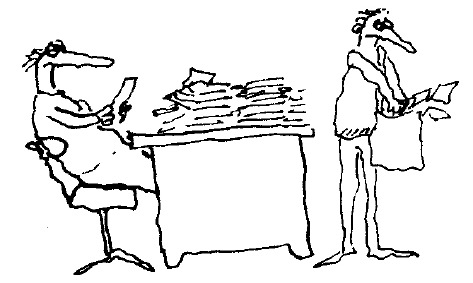
Passing out information is a straightforward and absolutely vital part of any nonviolent resistance. It is especially important if the mass media are taken over by the regime. The public service would play a key role in the underground economy in information, especially through contacts with groups such as trade unions, corporations and community groups.
* Alert dissidents. For public servants with access to relevant information, alerting dissidents of spying or impending arrest would be a very important task. Some public servants would be in a position where their department was the first to receive word of changes in policy designed to uncover or repress resistance activity. This sort of information would be invaluable to the resistance.
Information on identification of the regime's spies would also be important. Methods of distributing such information are discussed in the sections on passing out information and parallel communications systems.
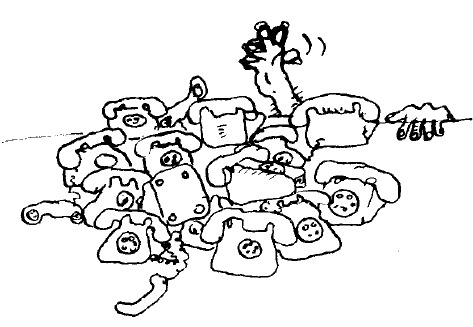
* Communicate with groups in other countries. A vital task for the resistance would be to alert people in other countries about what was happening, so that they could mobilise internationally against the regime using various nonviolent methods such as public protest, strikes and boycotts. If the resistance has leaked information damaging to the regime, sending it to the international media could be a potent step. It would be especially important to communicate with people in any country from which an invasion came: they could publicise reasons against the invasion and might be able to undermine their own government's support for it. By communicating information about its activities the resistance could win much needed political and financial support.
The importance of global communication should not be underestimated. For example, a major difficulty facing East Timorese opposing the Indonesian military occupation of their country is getting any word to the outside world. In the case of the military coup in Poland in 1981, the new military rulers immediately cut off all channels that could be used to communicate information out of the country. A key factor in the success of the resistance may be its links with sympathetic groups in other countries.
Telephone, telex, short-wave radio, and special channels used by technical workers are some of the means by which the resistance could communicate with groups in other countries.
Overseas telephone links are under the control of the Overseas Telecommunications Commission. (Domestic links are handled by Telecom.) While some public servants have access to overseas dialling there is always the possibility of the regime tapping such phones, (Indeed, tapping of telephone calls inside the country is quite likely too. Tapping will almost certainly occur; its extent will depend on the human resources available to the regime.) If the regime only taps the phones of high level officers then the resistance may be able to make use of fourth division phones. Access at night may be a way of avoiding detection. The resistance could be more effective if it were able to enlist the support of switchboard operators and telecommunications personnel.
In some key departments, all overseas telephone calls are recorded, so it would be hard to include resistance messages without detection. But all electronic communications channels and recording systems require technical support. Engineers who check out the networks and maintain recording systems normally can send messages to engineers at the other end that are not recorded. These engineering communication channels could well be used for communicating overseas.
Telex links in government and private offices can also be useful. They could be used to send messages to any telex number in the world. As copies of messages are normally kept, it would be necessary to find ways of avoiding detection. Learning to use a telex requires no special technical knowledge but it does need to be learned.
Short-wave radio is a good alternative means of overseas communication. The equipment is not very expensive, but it is vulnerable to detection.
Many public service departments have large computerised databases with international links which could be used to channel information to overseas groups.
For all of these channels except direct telephoning, the resistance would need to have people with some knowledge of the technology. Knowledge of foreign languages would also be valuable.
Many public service departments regularly entertain official visitors from other countries, and individuals may develop friendships and trust. These visits could be used as a way of communicating messages.
* Wear badges to symbolise opposition. Wearing badges has become a popular method of signifying opposition or concern today. Although badges and other symbols (such as flowers and clothing colours) make individuals vulnerable to reprisals, they can also be an effective way of building solidarity, as in the case of Solidarity in Poland. During World War Two people in a number of occupied countries wore symbols of opposition. For example, people in Norway wore red caps while in the Netherlands some wore yellow flowers. Occasionally, non-Jews in Germany and France wore the yellow star out of sympathy after it had been made compulsory for Jews.
* Obtain support through trade unions. Trade unions can be a valuable network for resistance activities. Union networks are varied and extensive. They have the advantage of extending across departmental and industrial boundaries. Working through unions can be an effective way of enlisting support of people in key industries.
Communications within unions that could be used by the resistance includes conferences, newsletters and personal contacts.
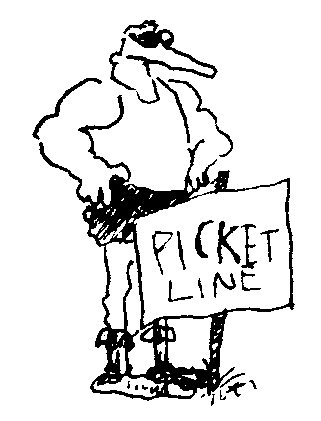
Some of the problems in obtaining union support include:
(1) ensuring that the crisis is seen as more pressing than professional concerns;
(2) overcoming traditional hostilities amongst unions and between unions and community groups;
(3) enlisting the support of people who are suspicious or unsympathetic to unions.
Leak information. In complex societies, governments and state bureaucracies exert a great deal of power through their control over information. For example, if a regime is violating its own stated principles by killing opponents or diverting funds to the ruling elite, this knowledge may be kept secret to prevent opponents building popular support. Instead, the regime may broadcast propaganda blaming terrorists for repression and hardship - even though the 'terrorists' might be government agents in disguise. In such situations, leaking information can be an extremely effective form of resistance.
The potency of leaks is shown by the witch-hunts inside the public service following leaks of what seems to be relatively innocuous material. The reason for this is that leaks are a threat to political and bureaucratic elites whose power derives in part from control over information.
Only in some areas do public servants have access to confidential and sensitive information. One way of obtaining information is simply to pick it up from desks or filing cabinets when alone in the office. If caught, one response might be "But I thought it was a file needed somewhere else".
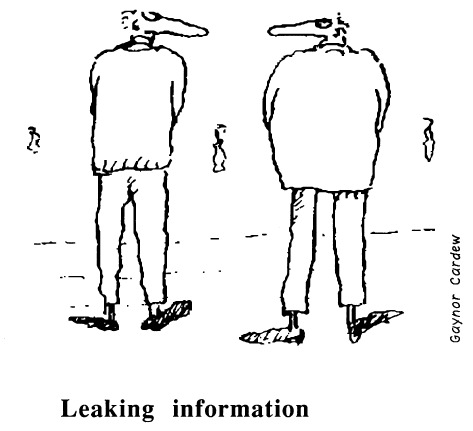
Today much information is stored in computer databases. Computer workers can gain access to these bases if they have knowledge of computer passwords.
An awareness of what information is relevant and how to separate it from a mass of data is vital.
To minimise the risk of detection the people involved should be aware of the procedures designed to inhibit and detect the source of leaks which are often employed when sensitive information is involved. For example, when confidential material is distributed each office or individual may receive a copy that is formatted and/or worded differently to other copies. This provides a method for pinpointing the source of the leak. This kind of check should be considered when reproducing information to be leaked. Normally documents should be retyped, and perhaps even paraphrased.
Leaving information lying around in the hope that the right people will find it is not an effective leak method. There is no guarantee that the information will reach those who can use it. Instead, it may simply be discovered by those who wish to withhold it. This could lead to security being tightened and access to information becoming more difficult. Whenever possible information should be passed directly to those who are intended to receive it.
It may be necessary to establish or tap into alternative communications systems. But even under heavy censorship, standard avenues of communication may still be used. With cooperation from journalists relevant news stories could be secreted in computers and word processors and printed at the last moment.
Another use of leaks is as a tactic to foster faction-fighting within the regime or to flush out supporters of the regime. For example, material could be leaked which shows a particular faction in a bad light.
* Resign. Under some circumstances, to have individual public servants resigning could be of great value to a resistance organisation. But it may be more useful for the majority of public servants to remain in the system working for the resistance. Jobs left vacant might just be filled by people more sympathetic to the regime.
There are some times when resignations would be of value. Mass resignations would be a powerful symbolic protest. The disadvantages to the resistance would be small if the jobs of the people involved were completely controlled by the regime. Mass resignations would put a great deal of pressure on a regime which was using the public service to legitimise itself.
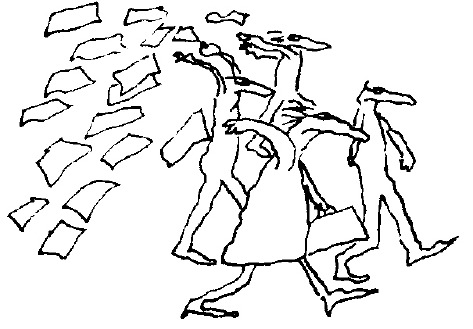
It would be valuable if top people, whose jobs couldn't be easily filled, resigned in a blaze of publicity. This again would be of great symbolic value. Finally, resignations could serve as a last ditch measure for public servants in specialised areas where it would be hard to find trained people to quickly fill their positions.
Resignation would be more damaging to the regime if records of work were left incomplete or incorrect. This would make work more difficult for other public servants reliant on the information and for anyone filling the positions.
* Go on strike. Going on strike can be a very effective weapon, as shown by the disruption resulting from many present-day strikes. To be truly effective the strikers should have clear ideas about the goals, duration and extent of the strike. Indefinite general strikes may adversely affect the workers and general population more than the rulers. Often it would be better to stay at work and utilise go-slow and other lower-risk tactics.
Nevertheless, short mass strikes would clearly demonstrate support for the resistance. Trade unions may be helpful or obstructive in organising such strikes, depending on the sympathies of their leaders and the strength of union networks. Strikes involving smaller groups of workers that can't be easily replaced could be valuable, particularly in areas important for the machinery of government but not so much for everyday life, such as the Department of Defence and the Taxation Office.
In considering any strike action the degree of support should be carefully evaluated. If only a minority of workers stop work then the resisters will be identified and isolated; if a majority of workers go out then collaborators will be exposed. Another factor that should be considered is that if the rulers control most sources of information, their version of any strike will receive far more coverage than the strikers' version. One possible disruptive, but perhaps safer, technique is to strike on some pretext such as allegedly poor working conditions, rather than striking directly against the government.
* Report sick. Reporting sick may be less risky for individuals than strike action. It could be a very useful interim measure, allowing groups and individuals to consider the position and plan future action. Organising a short mass 'sicki'" could be a way of testing the strength of support for the resistance without exposing resisters to the same degree of reprisal as in a strike.
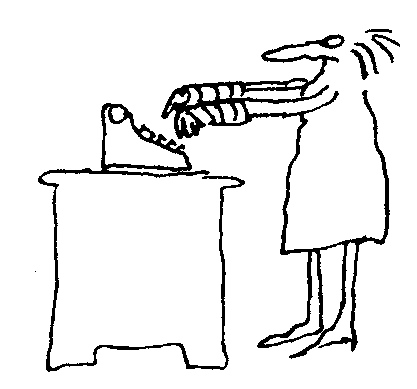
An action involving large numbers of people reporting sick for a longer period of time would probably become similar to strike action, unless it could be claimed that it was the result of some mysterious, highly contagious disease spread by a faulty air-conditioning system.
* Go slow on purpose. Bureaucratic 'cogs' have a natural tendency to move slowly, so it is not hard to imagine how public servants could develop this form of noncooperation. Files may pile up on desks and then 'go missing'. In some departments the decentralised nature of the filing system makes it very difficult to retrace files once they are lost. Public servants could feign incompetence in a variety of ways, from simply 'misunderstanding' tasks to developing complaints of eye strain, repetitive strain injury, back pain or allergies.

In some cases the noncooperation will be hidden by the error capacity of the system. For example, tasks that rely on computers allow great potential for mistakes, delays and incomplete information. These sorts of quiet mistakes can be especially useful when repression is harsh since it is very hard to tell whether the inefficiency is genuine or not. If mistakes were orchestrated on a large scale they could have quite a devastating effect on the regime's capacity to run the country and disseminate its propaganda. Because there are almost unlimited ways of creating inefficiency, the regime would have great difficulty in overcoming them.
* Disobey orders, delay responses. Publicly refusing to obey orders may be an option for the courageous or in situations where the repression is not severe. In other cases it may be wiser to disobey by feigning misunderstanding or delaying the carrying out of the order. It may be possible to give the impression that the order is receiving attention where in fact it has become victim to some of the methods described in the previous section.
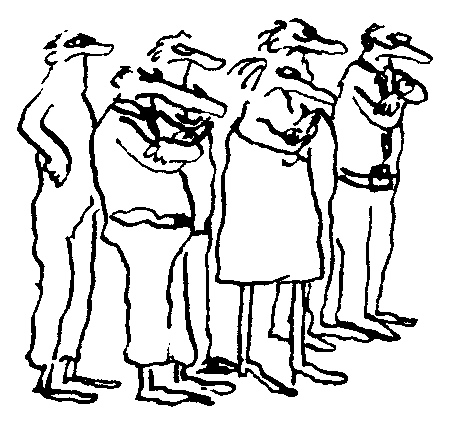
Refusing to type documents may not be very effective as such a task can be carried out by people without special skills. Similarly with distributing information. But some tasks within departments can only be carried out by one or relatively few people, such as fixing photocopying machines or computers. Such people may be prepared to refuse an order if the risk of reprisal is not great.
* Alter manifestos, give false information. In some departments, altering information may be crucial to the survival of the resistance, for example where lists of the organisations, meeting places, networks and dissident groups have been collected. In such cases it may be safer to doctor the information with false names, addresses and so forth rather than to remove it.
Altering documents and manifestos for use by the regime may be possible in minor ways. Major changes would probably put the perpetrator at risk because of the standard lines of responsibility that exist in most departments.
False information can be created in a number of ways. In some cases it is easy to create false statistical information. This could be used to cover up production inefficiency or create false impressions of the extent of the resistance. Circulating rumours among the regime could be a very effective way of causing confusion about resistance activities.
* Chauffeur leaders to the wrong destination. Such an action would put the driver at considerable risk of reprisal, but in some situations it could cause considerable damage to the regime.
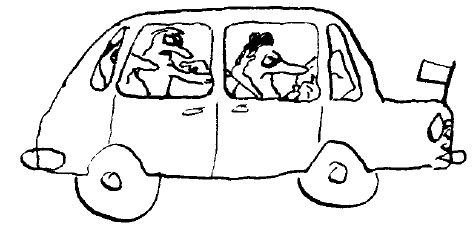
Less risky activities might include tinkering with cars, feigning breakdowns, inducing flat tyres or depleting the pool of cars by making false bookings. Some regimes prefer to have their own trusted vehicles, drivers and mechanics rather than risk the possibility of breakdowns or assassinations.
* Destroy information. Information is a key resource in modern industrial societies. A regime trying to rule Australian society would have a hard time without access to a great deal of information produced and stored in the public service. The information which might be useful to a regime includes:
- data on individuals who might lead resistance activities (especially data held by intelligence agencies and the police forces);
- confidential information on people, especially prominent figures, which might be used to blackmail them;
- information on running the economy, such as about production, trade and taxation;
- information on technical systems such as telecommunications and energy systems;
- material that could be used to monitor groups and individuals, such as records of travel arrangements and money transactions.
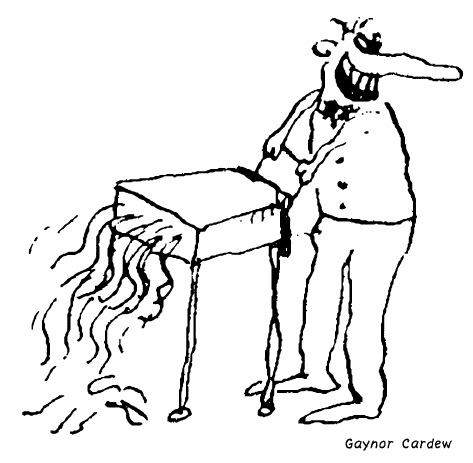
There are lots of ways in which public servants could destroy such information or make it unavailable: shredding it, dumping it or moving it to another location. In many cases this would be quite easy. Where files are decentralised, they are very difficult to trace when lost.
Perhaps the most difficult thing in destroying information is deciding which information should be destroyed. Some information, such as that vital to providing social services, should not be destroyed since it aids the resistance more than the regime to continue the functions requiring the information. (If the regime were to destroy such information, the blame for collapse of vital functions would fall on it.)
One solution in many cases is simply to remove information from official locations and to make it available to the resistance. This would apply for example to lists of key people in community groups interacting with a department, or to lists of trade union members.
* Put bugs in computer programmes. More and more information in the public service is being stored on computer files, and more and more activities are done using computers. Therefore, preventing the regime from using computer files and programmes would be a key task of the nonviolent resistance.
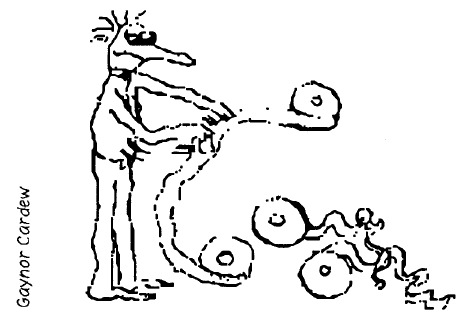
For people who know how to use computers, sabotaging them is relatively easy. There are many ways to proceed. One way is simply to log on to a computer and instruct the system to destroy files. To log on, a password or some other way of getting past internal computer security systems is needed, but these are not hard for insiders to obtain. A more sophisticated procedure is to change access codes or programmes so that others can no longer use them. This is more suitable when the computer files will be useful to the resistance. An even more subtle approach is to build a 'logic bomb' into a computer system. At a certain time or at a specified cue - or lack of a cue - some or all of the active computer memory is destroyed and no trace of the 'logic bomb' remains. Some bugs of this sort can be constructed so that they are almost impossible to find even when it is known that they exist.
The same precautions apply here that apply in the case of destroying any information. Material that is more useful to the resistance than to the regime should not be destroyed.
Computerisation opens new possibilities for changing, hiding and manipulating information. It is easy to systematically alter or delete information stored on a computer, and it is more difficult to detect the changes than is the case for written records. (Care must be taken to avoid detection, since for some computer systems there are sophisticated systems to expose tampering. Then, of course, it might be possible to tamper with the detection systems!)
Another possibility is to use a computer programme to scramble information. A 'descrambling' programme could be held by the resistance in case the original information were ever needed.
As well as deleting or altering information on computer files, public servants could sabotage computer hardware, such as terminals, discs and processing units. This would be especially easy in the case of microprocessors in offices. A bit of spilled coffee on a computer would be such a terrible mistake - and there's also that annoying static electricity. Emptying a dust bag from a vacuum cleaner in a computer room - terribly sorry! - would wreak havoc with the computers.
Information on computer discs or tapes is very vulnerable to magnetic fields. Taking an electromagnet into a tape storage area and waving it around each tape would destroy an unbelievable amount of information. This is a tactic strictly reserved for material useful to the regime.
Another way to disable computer tape is to cut it. Mangling and beating are also effective.
Of course, computer programmes can be rewritten. But it takes a lot of time. If the computer tapes used to run a large computer system were destroyed (including all backup copies) and written documentation about the computer system were removed, it could take months or a year to get the system operating again - even if programmers and operators all cooperated to the fullest.
* Scramble telephone systems. The telephone system is a lifeline of the public service in Canberra. Switching telephone numbers around would bring much activity to a halt. This would not be especially useful to the resistance if opposition to the regime within the public service were strong. But scrambling the telephone systems in particular buildings could be useful, for example if phones were being tapped or if it were necessary to contact particular individuals on phones where they couldn't be traced.
In more and more buildings, PABX telephone systems are in operation. These are controlled by single computer-type discs. Removal of this disc would disconnect the system, and putting in an alternative disc would allow numbers to be scrambled. Advanced planning would be needed to decide which contingencies were worth preparing for. Also, since there is usually only one person working the PABX, it would be better for others to mess up the telephone system in order to take the onus off this person.
Another way to cut off the telephone system under PABX is to cut off the power.
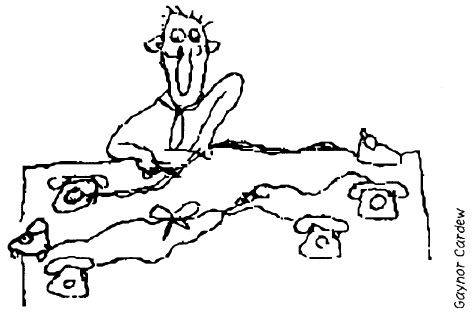
The telephone system can be used to divert calls from a particular number to another one. This can be done on some PABX phones by dialling in a code that diverts any incoming call to any specified number. This would make it hard for a person's calls to be traced. A person who didn't want to be traced would simply answer at the diverted (or multiply diverted) number. Another possibility is conference calls that could well be valuable for planning resistance activities.
* Sabotage machinery. In an office controlled by the regime, sabotaging their activities by disabling equipment might be the only effective resistance activity possible.
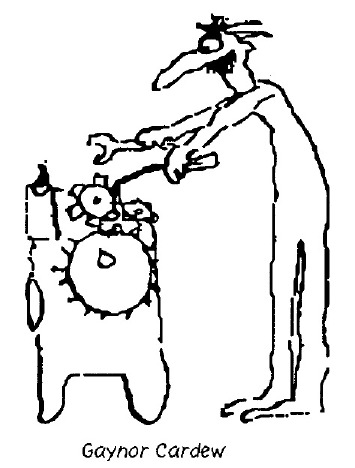
If surveillance were so close that the use of equipment such as photocopiers, telephones, telex and typewriters by the resistance for resistance work was impossible, it could be very annoying to people working for the regime to constantly find these things out of order.
Offices could also be made unworkable if electricity were cut off and toilets and water systems were not working.
In newer buildings where air conditioning is indispensable it could be very disruptive if it were out of action. Even apolitical public servants complain and agitate over troubles with faulty air conditioning systems. Decommissioning of air conditioning to rooms where the regime was holding important meetings could be of great annoyance value.
Corrosive sprays or toilet cleaner put into air conditioning ducts will put them out of action. This can be done very selectively. Plans of the air conditioning systems in public buildings could be obtained from the Department of Housing and Construction.
Another possibility is the circulation of drugs through air conditioning systems. This might not be a nonviolent action if there were a danger of causing injury to people, and may be counterproductive.
Tampering with machinery could completely cut off and make unworkable the regime's nerve centres.
* Send cheques to opposition groups. The government bureaucracy processes large sums of money daily. Payments to individuals and groups are made in many forms, such as grants, contracts, social welfare payments, tax refunds and wages. Mistakes and overpayments are quite common in normal circumstances, so in a time of crisis it should be possible to divert government money to the resistance.
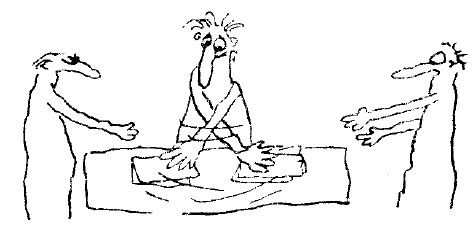
In some departments cheques are commonly given to people over the counter. This procedure could be used to pay out small sums of money to resistance workers. Files for false welfare recipients, workers and so forth could be created and overpayments made to genuine recipients, especially if parts of their files were 'lost'. It may be difficult to send out cheques on a large scale more than once unless those who audit departmental accounts are sympathetic. Auditors are often computer programmers who can cover up 'mistakes' in payments.
There could be many opportunities for creative programmers to tamper with figures in cases where financial transactions are recorded on computers. Funds from financial institutions could be obtained by tapping into their computers and programming them to pay out.
Those supporters of the resistance who are in a position to authorise large payments would have to judge the worth of such action against the likelihood and severity of repercussions. Government workers who had been dismissed could probably be kept on the payroll for some time, this being explained as an oversight.
* Use offices for resistance work. For many public servants, the most important physical resources at their disposal are their offices. This includes desks, telephones and access to files, libraries, photocopiers and mail systems. Not least important is contact with other workers. Being in the office provides opportunities for all sorts of resistance activities.
Using public service offices for resistance activities could be quite straightforward. Already many offices are used for all sorts of 'underground', non-official purposes, from supporting victimised members of the public service to running betting services. Many public servants know all sorts of techniques for doing what they want and avoiding detection.
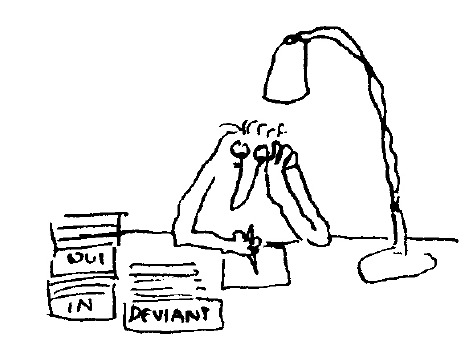
Sometimes it may be useful to lend offices to members of resistance groups who might otherwise not have access to telephones, mail systems and printing equipment. If all members of an office support the resistance, extra individuals could be brought into the office with no difficulty. Otherwise, there are usually various nooks and crannies in office buildings where an individual could work all day and use a phone with no one being the wiser. Such protected locations would be especially useful for resistance activists who are sought by the regime. Even in 'secure' offices, where staff must show an ID card to a security person, fake IDs would be possible.
Switching offices may sometimes be useful when individual public servants are under threat of arrest. The confusion of altered policies and administrative rearrangements could be used to explain changes in personnel. Wide scale switching of offices may not be advisable, since it may confuse the resistance more than the regime.
If numerous workers are about to be forced out of their offices, it may be possible to hold a sit-in. But if only activists are to be forced out or arrested, then a large-scale action may not be supported by all workers. Such a decision needs to be made taking into account the likely effect on both the regime and the resistance.
Tradespeople
There are thousands of people in Canberra who work in one of the trades. There are plumbers, carpenters, electricians, builder's labourers, boilermakers and many others. These people hold valuable skills necessary to keep industrial society going. In Canberra, because of the dominance of white-collar employment, tradespeople do not hold the same degree of political power as in many other cities. Nevertheless, the Trades and Labour Council, the major trade union body in Canberra, is strong and often takes principled stands on issues. If a sizable fraction of Canberra tradespeople took action against a regime, the effect would be dramatic.
* Disable, fix, move or alter functions of equipment. Systems of power generation, water supply and sewerage would normally be kept operative so as not to harm the general population. Power stations would most likely be supervised closely by the regime. It may still be worthwhile and possible to cause occasional blackouts either by disrupting a power station or sabotaging points in the distribution system by cutting wires or tampering with substations. Temporary restricted blackouts, particularly at night, could be useful while the regime was engaged in some important activity such as hunting down dissidents. It may be difficult to cut the power to particular buildings being used by the regime although faulty repairs in such buildings could damage the power supply. Gas and oil are used primarily for domestic purposes in Canberra and normal distribution would probably continue. It could be useful to secretly stockpile supplies of these in case of future shortages.
To cut water supplies to particular buildings, faulty joints could be created in pipes so they burst after a certain time. Leaks are very destructive in some circumstances, such as in areas with sophisticated electrical equipment or computers. Placing a piece of foam rubber down a toilet out of sight will block it up after a few flushes.
There is a myriad of ways to disable the regime's cars, buses and trucks so that people are not hurt but breakdowns occur. These include altering timing, tampering with spark plug gaps, installing deteriorating hoses and lines or faulty wheel bearings and disconnecting air in trucks so that the brakes apply. Railway workers could disrupt trains carrying the regime's personnel and supplies. Tradespeople often have access to vehicles that could be used for transporting food and other goods. It may be possible to hoard petrol for emergencies and powering generators.
Heavy machinery such as earthmoving equipment is also easy to sabotage. For example, air can be let into a diesel engine injector system or objects put in the engine. This would often look like a breakdown and the whole machine would have to be dismantled to check. Reversible 'breakdowns' can be caused by simple maladjustments of the semi-automatic hydraulic controls; these could probably be corrected by someone else with expertise.
For tradespeople working for the regime, there are many ways to disrupt work, such as pouring concrete wrongly, using smaller gauge wire than necessary and generally working sloppily. Subtle but important 'human' mistakes in the reading of instruments (such as theodolites) already occur. Engineers could construct buildings to fall down during construction, but this would have to be done in a way that avoided causing injury.
Tradespeople could build underground or secret rooms provided with amenities. Such rooms could be used for hiding dissidents or short-wave radios. Tradespeople could also construct makeshift shelters and provide concealed, sound baffled generators for emergency power.
* Provide communications via work contacts. There are many different positions in the trades. Resistance would be most effective if there were cooperation among different tradespeople and communication about methods of resisting. People on the job could also communicate about the resistance in general and pass on information. Tradespeople sometimes have access to important installations and/or plans of these and could pass on information to other resistance workers. They may also learn other important facts about the regime's actions in the course of their work.
Media workers
It is of crucial importance that the resistance be able to communicate its point of view to the public, particularly if the regime has control of the majority of normal communication channels. It may be possible to still partly utilise such channels, as well as setting up alternative communications. The two most important forms of communication are broadcasting and printed information.
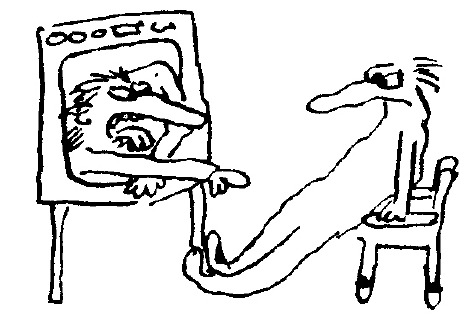
Unless the regime closes down a TV channel, radio station or newspaper, opportunities will exist to broadcast material sympathetic to the resistance. If there were enough staff on side, it would be difficult for the regime to maintain constant supervision. Workers could appear to cooperate whenever the station or press was visited. Plans could be made to salvage equipment for resistance use if the station or newspaper were closed down.
It may be possible to sneak in resistance materials while regime-controlled broadcasts are running or to tamper with official newspaper stories. Official releases could be slanted to appear ridiculous or dictatorial. Normal programmes and newspaper columns could be adapted to provide a forum for resistance groups. TV channels could voice over resistance announcements while showing normal programmes, or insert relevant footage (for example, of demonstrations) within programmes.
Technicians who manage systems that print newspapers would play a key role. In large publishing operations, sophisticated technology is used, and only a very few people know how to run it. They could flick a few switches and pretend that things had broken down. Some sub-editors have a degree of technical understanding as well. For the key technical personnel, reporting sick and other forms of noncooperation would be effective in stopping the production of the paper.
On computer terminals for typing in newspaper stories, it is possible to 'lose' stories (sometimes this happens by accident) and even to lose whole pages or the whole prepared paper. If people were brave enough, it would be very easy to prevent the paper coming out - much easier than years ago before the new technology.
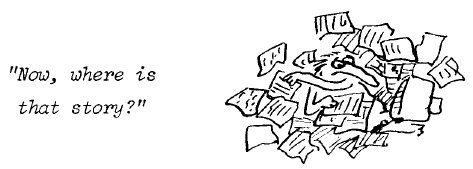
Delaying release of a paper wouldn't necessarily matter to the rulers, hence going slow is not such a useful tactic. The aim of the regime would be to put out propaganda rather than a regular news service. (On the other hand, a regular service would be necessary if the paper were required to appear legitimate and uncensored.) If the regime wanted to have a normal-looking paper but to include propaganda stories, it would be possible to lose them or replace them, with blank space for example. It would be hard to track down who did it, although the suspect would most likely be among the relatively small staff.
There are undoubtedly possibilities for sabotage at the printing stage. At the distribution stage, newsagents might 'lose' copies or find that they 'never arrived'. Or van drivers might never deliver the papers, or they might substitute other material.
Pirate radio stations can be very successful as shown in Britain during the 1960s. (AM radio generally has a longer range, although FM is more mobile and cheaper.) They can be hard to track down if they keep moving (for example in a caravan or ship), or if they can be dismantled quickly and thus 'disappear'. Problems with publicising the times and frequencies of broadcasts could be overcome by distributing leaflets or perhaps by inserting messages into programmes on conventional radio.
Underground presses would be simple to set up. There are many typewriters and photocopiers around and using these would be the easiest way to produce leaflets. Lists could be made in advance of sympathetic people with items of equipment, and people could also be ready to remove equipment from their workplace, if appropriate. Hand-powered printing machines could be used for reproducing documents without electricity.
It would be necessary to have large supplies of paper and ink; these could be 'borrowed' from government departments, the university, warehouses and so forth. It would be very handy to have someone with the technical knowledge to repair photocopiers, which are very prone to breakdown. This would not be a problem if support of photocopier supply company staff or management were obtained. Such people could also supply paper and other materials.
Public service departments also have many facilities such as typewriters and photocopiers that could be utilised for the production of leaflets and newsletters. It would often be possible for someone to produce such material undisturbed, hidden away in the rabbit warrens found in many departmental sections.
In some cases it may be possible to use full-scale printing presses located in government departments, newspaper offices and commercial printers. Using these would be more complicated and dangerous, but could be very effective in certain circumstances such as to bring out a special edition of the Canberra Times after the paper had been closed down by the regime.
Technically, papers can be produced by very few people. In Canberra there are many people who have skills in journalism, illustration and layout who could make printed material more readable and effective. If enough workers were available, posters could be designed and continually stuck up around the city. It would be impossible for the regime to find and destroy every means of producing such material.
Members of professions
A substantial number of people in Canberra are members of one of the professions: the ministry, medicine, law, teaching, social work, pharmacy, engineering and others. As well as the usual complement of such professionals to be found in Canberra's predominantly white-collar community, there are also positions for lawyers and some other professionals in the public service.
Professions are distinguished from other occupations by their collective control over their conditions of work and usually by their legal monopoly over provision of services. Many professions have a high status in the community. If members of professions spoke out and acted against the regime, this would have a powerful effect in reducing its legitimacy and in bolstering the resistance.
There is an enormous range of actions that members of professions could take as part of a nonviolent resistance. Rather than trying to indicate all of these - many of which are similar to actions outlined for public servants - we list here a few actions specific to some particular professions.
Medical workers
In any situation involving violence, the role of medical workers can be crucial, both in treating the wounded and in exposing the violence.
Injured members of the resistance might be reluctant to visit a hospital or even a doctor's surgery for fear of being detected and arrested. Those doctors, nurses and ambulance drivers who were prepared to go out and help injured members of the resistance would play a vital role.
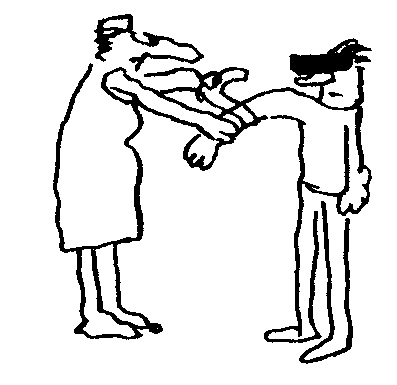
Medical workers are often among those who first become aware of violence - beatings, torture and murder - used by ruthless regimes against opponents, because the victims are brought in for treatment. In some cases the regime will deny responsibility for the violence. Medical workers can expose what is happening. They can report on large groups of people with certain injuries. Their expertise, and also their status as being knowledgeable, means that what they say will be treated very seriously. Doctors have a lot of contact with people and thus opportunities to discuss the situation.
Hospitals hold many facilities that can be used by the resistance. The equipment held includes paging devices for doctors, walkie-talkies for ambulances (with a 20-kilometre range), x-ray equipment, libraries and helicopter pads.
Dissidents could be hidden among the patients. This would apply especially to injured dissidents, who could be provided with telephones or other communication equipment. Rooms within the hospital could be used to hold meetings.
Support for the resistance could be sought among the personnel and patients in the hospital. But often there is little solidarity among doctors, many of whom are conservative and see themselves only as caring professionals whose role is to treat all sick and injured without becoming politically involved. This means that hospitals might not be safe refuges.
Disguising leading dissidents by plastic surgery probably wouldn't work. There are only a few plastic surgeons in Canberra and they normally do only small jobs. Other forms of disguise would be easier and safer.
Some of the supplies held by doctors or in hospitals could be passed out to members of the resistance, such as medicines and bandages. Any large-scale operation of this sort may require support by the hospital administration, since medicines are closely monitored and large supplies are held not by hospitals but by drug manufacturers. If the system is still working it would be possible to obtain money for the resistance by intentional overservicing.
Medical records sometimes hold information that can be used against people. Rather than letting the regime obtain this information, it could be destroyed. But since there is some information useful to potential patients, it might be better to give the records to the patients themselves.
If leaders of the regime required medical treatment, there would be the possibility and temptation of not giving them the most effective treatment and so limiting their service to the regime. For example, doctors could sedate people or tell them they were sicker than they were. If a group of doctors got together they could work out ways of putting people out of action for a time without doing them any lasting harm. Whether this would be compatible with the principles of nonviolent action, and whether it would actually help the resistance, is another question. A better approach might be to provide normal service but also present arguments from the viewpoint of the resistance.
Advance preparations could include basic medical education of the public, such as first aid and life saving, to make people more self-reliant.
Legal workers
Most regimes, even the most ruthless, try to provide a public facade of legality for their policies and actions. In achieving this, some cooperation from the legal profession is essential. Therefore, obtaining support from judges and lawyers is an important task for the resistance. What can legal workers do?
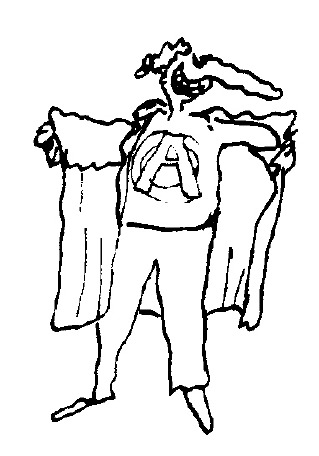
* Defend resisters who are arrested or indicted.
* Expose violations of laws by the regime itself.
* Refuse to cooperate in fraudulent 'show trials' set up to whitewash the regime.
* Denounce new laws that violate civil liberties.
* Speak out against the regime, for example against double standards in the application of the law.
Social workers
In their training, social workers learn how to work with individuals, families, groups and the broader community. They work in many different areas, for example government and private welfare agencies, the health care system, the legal system, the school system and government departments and bodies such as Defence, Transport, Veterans Affairs, Social Security, Telecom, Foreign Affairs, Education and the Commonwealth Employment Service. Their work may be either clinical or administrative or both.
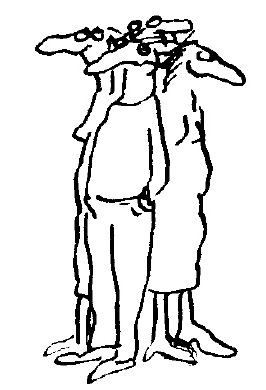
In Canberra, social workers liaise regularly with each other even though they may work for different employers. In such a small geographical setting it is also possible to know (or know of) all the other social workers quite well professionally and socially.
Throughout the community generally, social workers work within an extensive network. Some groups with which they have contact, directly or indirectly, are:
- health care workers (nurses, physiotherapists, occupational therapists, doctors, pharmacists, speech therapists, psychiatrists, psychologists, etc.);
- teachers, students and their parents;
- government welfare bodies;
- statutory authorities;
- private or religious welfare agencies;
-
the courts; the police;
-
legal workers;
- self-help support groups (which social workers often help to set up);
- community service groups;
- trade unions.
This list itself suggests the wide range of community groups that exist in Canberra and that could be mobilised to oppose a repressive regime. Communicating information to such groups and stimulating and coordinating action are vital processes. Social workers are trained to organise social action and therefore could play a key role.
Social workers also have a very good overview of the community and how it operates. It is their professional duty to remain constantly aware of current information or procedures that affect existing or changing situations or particular social issues within the community, and to provide policy input.
For these reasons social workers might be vulnerable to arrest, though their activities are not usually seen as so overtly political as those of trade union or political party activists.
Teachers
Teachers occupy an important occupational role, since they are regarded as key role models for imparting values to the young and establishing community standards. Teachers regularly have contact with numerous students as well as other people, and hence have many opportunities for social organising. In Canberra, the ACT Teachers Federation is quite strong and has taken militant action with support from most teachers.
* Teachers can take a public stand against the regime's actions. Because of the respect that many teachers have in the community, this is an important step.
* Teachers can refuse directions to alter their teaching methods or content to suit the regime. Such a stand was taken by Norwegian teachers during the Nazi occupation of 1941-1945. Many teachers were taken away to prison camps, but the teachers, with massive support from the community, still refused to obey the Nazi directive. Eventually the Nazis backed down and released the imprisoned teachers. Nazi doctrine was never taught in Norwegian schools.
* Teachers can present anti-regime information and views in their classrooms. This is a delicate issue, since many parents might see this as imposition of dogma, and students who sympathised with the regime might use diversions from the normal syllabus as a basis for attacking activist teachers. Another approach would be to provide opportunities for critical discussions of current issues in which viewpoints from 'both sides' would be raised. This would allow issues about regime violence, justice, due process and democracy to be canvassed. One aim would be to encourage students to think critically about what was happening. Critical thinking is always a threat to repressive regimes.
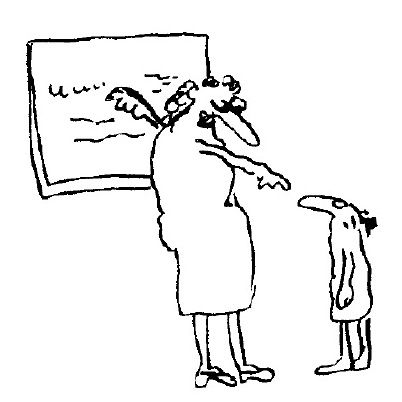
* When particular teachers are victimised by the regime for speaking out or refusing directives, other teachers can support them by strike action or by refusing to fill any vacancies created by the regime's actions.
* Teachers can provide opportunities for students to take action without detection. This might involve turning class time over to 'practical activities' (against the regime), or turning a blind eye to absences of particular students.
* Schools provide many resources which would be valuable to the resistance, including meeting rooms, printing equipment and public address systems. Teachers could use many of the same forms of resistance as public servants.
Students, academics, unemployed
Students often have played an important part in leading protest against governments, as in the case of the 1968 events in France. Canberra has a university, a college of advanced education and a number of technical colleges as well as many secondary schools. A substantial number of students (and a small number of academics) are accustomed to organising and participating in demonstrations and similar actions. They usually have the time and the opportunities to do this. Many students are well informed and have their own networks that could be used to publicise the actions of the regime and reasons for resistance.
Campuses could become centres of resistance and the large number of part-time students in Canberra could then spread information in their workplaces. Resistance meetings could be held safely among the many normal campus activities. Dissidents could be hidden in student colleges and balls.
Students would also have the time to take part in many activities such as planning, printing, distribution of papers, recruiting supporters and distribution of food.
As tertiary institutions are traditionally centres of dissent, new rulers may attempt to shut them down or carry out mass arrests. But such actions could result in bad publicity. Campuses have the advantage of having a degree of self-government. The effectiveness of tertiary institutions as centres of resistance may depend a lot on the sympathies of the top members of their administrations. Another danger is that some students may be sympathetic to the regime and spy on the actions of resisting students. Schemes might have to be developed to detect such sympathisers.
The opinions of academics and other intellectuals are often sought on current issues. Academics could speak out challenging the legitimacy of the regime and registering a strong symbolic protest. This would be important, as no doubt some academics would support the new regime.
High school students could be as active as university students especially with the cooperation of their teachers. They could also encourage their parents to resist and provide further communication links. Responsible protest by teenagers usually has a strong public impact.
Unemployed people have similar opportunities to students to take part in various actions. In Canberra the unemployment rate is a bit less than five percent. Many of the unemployed may not be motivated to resist unless they can see the possibility of conditions improving for them in the future. On the other hand, the unemployed have the least to lose, and there are organisations such as Jobless Action containing dedicated activists with experience in political campaigns. Some strong networks do exist among sections of the unemployed.
One problem for both students and the unemployed to overcome is their negative image with a proportion of the general population. This could be countered when necessary by not conforming to stereotypes.
Suburban dwellers
Canberra is composed almost entirely of suburbs. There are no real urban areas: typical suburban housing begins just outside the main centres of shopping and offices, and extends to the fringes of the city. Most people live in separate houses on small blocks of land. There are some town houses and small blocks of flats. There are few high-rise apartment blocks and little high-density housing typical of the inner parts of large cities. Canberra is very close to being pure suburbia.
Suburban dwellers can play an important role in developing distribution networks for essential goods such as food, petrol, and spare parts. Not only do they have the advantage of relative security in carrying out such tasks but neighbourhoods constitute an almost unlimited source of 'safe' storage places. These can include anything from derelict factories and sheds to secret caches in houses, garages and backyards.
It is quite possible that at some stage rationing would be introduced. This gives the regime access to essential resources and also can be a means of limiting unwanted resistance activities such as hiding of subversives and communication among resistance groups. In preparation for such a situation suburban dwellers could establish local storage depots. Developing sympathy among local shopkeepers would be a crucial part of maintaining distribution networks. Shops themselves might be more vulnerable to surveillance but shopkeepers could act as intermediaries in obtaining supplies.
Suburban dwellers could serve as a basis for resistance groups and networks. It would be important for people to simply meet in each other's houses to discuss fears and concerns and engender solidarity. Although people in Canberra suburbia are often isolated from each other, there are numerous networks that could be utilised such as churches, parents and citizens associations, sporting clubs, service clubs, babysitting pools and activist groups of various kinds.
Once a small local group is established, members could approach other neighbours to discuss issues and expand the group. The reactions of people to resistance will vary greatly with their position, experience of repression, beliefs and personality. Initially, networks could be formed on a relatively non-threatening basis, such as the need for communal childcare. Suburban groups would probably contain members involved in resistance at their workplace and elsewhere, and who could provide information. The groups themselves would facilitate dialogue between members of different occupational groups.
Suburban dwellers could be active in other ways, either as individuals or as small groups. Such activities could include harbouring and using printing and broadcasting equipment and hiding dissidents. If possible communications networks could be maintained by telephone.
The houses and shops of collaborators could be watched by neighbours and if necessary such people could be followed. Unusual activity might indicate a search for hidden dissidents or equipment in the area and appropriate warnings could be given. Collaborators would often be identified in the process of building a local group.
Like students, suburban dwellers would often be able to organise and attend demonstrations and other actions during the day. However, it may be difficult for some because they have not been used to taking part in political activity. Many could get involved in small-scale actions such as protesting at the homes or shops of collaborators; often they would be interacting with people they know. Within a neighbourhood it should also be possible to organise boycotts of particular shops or goods and this would involve little risk.
Child care could be organized in local groups in people's houses. A number of adults could look after a group of children with the help of some books on child care and play group activities. This could even be done by people not used to coping with children.
While parents were involved in training for social defence and as networks of community self-reliance grew, organisations of child care would evolve in a natural way. This community closeness would make organising things like child care and food distribution easier in an emergency.
From experience with children at the Co-operative School in Canberra, children become very adaptable and happy to move from one family to another if this is the norm within the group. For example, children might regularly sleep overnight with their friends, returning to school with them in the morning.
If tension were very high, parents might want their children with them. In this case child care could be organised on a roster system in the office or other work place.
Street signs and house numbers could be changed or removed to confuse the regime. Someone nipping about in the dead of night would have little trouble pulling up and rearranging street signs. (Canberra street signs pull up very easily if you wriggle them about a bit. Children do it all the time.) The Czechoslovak people removed house numbers as part of their nonviolent resistance when the Soviet military invaded Czechoslovakia in 1968.
Another activity for suburban dwellers would be hiding dissidents. Dissidents need to be hidden amongst people who are not directly linked to them.
A box of disguises containing things like wigs, glasses and hair dyes would be a good thing to have prepared in advance.
Planning could also be put into good hiding places: 'priest holes'. These could be dotted around the neighbourhood and could contain some provisions.
Social action groups
Groups of people who organise themselves and others to take action on social issues are called social action groups. Usually this designation applies to groups which are not particularly powerful or who lack connections through standard channels, such as workers, feminists and environmentalists. Social activists typically use 'outsider' methods such as articles, letters, petitions, rallies, vigils and sit-ins.

Social action groups can be found in many places, such as among trade unionists, members of political parties, professions and church congregations. There are also many groups not based in larger organisational groupings, such as many peace groups.
Members of social action groups often have considerable experience in nonviolent action and thus are in a good position to organise action against a repressive regime. Experienced social activists usually have many contacts with other groups, and so can provide important networks for the resistance. Finally, many social activists have developed a fine political sense, especially in the use of public forms of protest. Their good judgement could prove invaluable to the resistance.
There are lots of obvious things social activists can do to support the resistance. Many of these are covered in our discussions of other groups. Here we just mention a few points.
* Social action groups can use their networks to promote the resistance. People in social action groups often know each other well and have developed considerable trust. The groups can then act with fewer worries about reliability and infiltration by the regime.
* Social activists can train others in skills of political analysis, forming organisations, planning actions, developing strategy and building networks. People can learn some of these things through reading about them, but person-to-person discussion, practical exercises and direct action itself are invaluable. It is important that experienced activists share what they know with many others, so that the resistance does not depend on a few key people.
* Prominent activists and all members of prominent social action groups are prime targets for harassment and arrest by the regime. This is another reason for sharing out information and skills as widely as possible. But beyond this, activists should be prepared for the possibility of surveillance, harassment, arrest and perhaps beatings or worse. Rather than just suffer these when they come, any such occurrences can be used to mobilise support for the resistance. By keeping many or most of their activities public and known to many people - including physical location, state of health and round of activities - it becomes much harder for the regime to attack or detain individuals without publicity.
* Because of their commitment to goals such as freedom and justice, regularly expressed in terms of social action, social activists are more likely to be in the forefront of opposition to a repressive regime. They are more likely to be involved in rallies, occupations and various forms of civil disobedience. As a result, the activists are more likely to be arrested and put 'out of commission'. The value of such risky activism must be weighed against the value of the activists working more quietly to build networks, train new activists and develop strategy. While it is true that new activists will come forward and learn quickly, it would be unwise for all the most experienced activists in the resistance to let themselves be put in gaol.
FITTING IT ALL TOGETHER
We have described many different types of nonviolent actions that can be taken by a variety of individuals and groups to oppose a repressive regime. But a motley collection of actions does not necessarily add up to an effective resistance. What are the keys to a successful resistance?
First, the resistance must be based around defending basic principles, such as democratic participation in social decision-making, freedom from arbitrary arrest and free speech. Such principles provide the possibility for support from all sectors of the population, and also for capturing the loyalties of members of the regime. Focussing on special interests - such as the salaries of a particular occupational group - has the danger of alienating potential supporters and splitting the resistance.
Second, it is vitally important to maintain the unity and morale of the resistance. Decisions about demonstrations, strikes and other actions should be made with careful consideration of their effects on unity and morale. For example, a strike can be very effective if nearly all workers join it, thereby showing the unity of the resistance to both the resisters and the regime. A strike should not be called if it is likely to have a poor turnout and demoralise the resisters.
Third, success depends on persistence. Nonviolent resistance is not guaranteed to succeed quickly, any more than violent resistance is. In a long struggle, tenacity is needed. The resistance should not play all its cards in a risky effort to obtain quick victory, but rather should emphasise long-term aspects of the struggle. These include maintaining information channels and networks, constantly seeking support from all quarters, maintaining nonviolence, and spreading the skills useful for effective resistance.
Finally, advance preparation is vitally important, just as it is with violent methods. A conventional army in which the soldiers are untrained and in which no equipment has been manufactured or stockpiled is unlikely to be successful. Similarly, a nonviolent resistance without training, planning or physical support systems is unlikely to be successful. Most historical uses of nonviolent resistance have been spontaneous, and their success has been largely a matter of luck. Advance preparation would include training in the methods and strategy of nonviolent action, the development of plans for various contingencies, and the establishment of physical and organizational supports such as short-wave radios and communication networks.
In this booklet we do not offer a blueprint for a social defence system for Canberra. The actual training, plans and infrastructure for such a system can only be developed with the participation of significant numbers of people.
We turn now to some general aspects of social defence in Canberra: responding to different degrees of repression, decision-making and coordination of actions, and specific obstacles to developing an effective social defence system.
Degrees of repression
As described earlier, nonviolent action can be divided into three types: symbolic actions, noncooperation and nonviolent intervention. Symbolic actions - from petitions to rallies - usually are the 'mildest' forms of resistance, while nonviolent intervention - including sit-ins and alternative government - usually provide the deepest challenges to existing power systems. Which types of nonviolent action are most appropriate? This depends on lots of factors, including the interests, skills, organisation and strength of the resisters. One key factor is the degree of repression.
When the repression is relatively mild, it may be manifested in limited censorship, arrest of some activists and curtailment of free speech. In this situation, there are many avenues to mobilise support through 'legitimate' channels, such as through the media, the trade unions and opposition political parties. In such a case it is often wise to avoid highly provocative actions - such as major sabotage - and to concentrate on mobilising support through communication and networking and by exposing the illegitimacy and human rights violations of the regime. Noncooperation and intervention can be used when they command wide-scale support. The aim should be to win the loyalty of uncommitted people. Violence is especially counterproductive in this situation. If the resistance has mass support, then major actions can be organised to challenge the repression and the regime.
When the repression is severe, it may include mass arrests, martial law, torture and killings. Opportunities for the resistance to oppose the regime through the media or through trade unions and political parties will be limited, since these channels will be prime targets for repression. Under severe repression, it is likely that many people will oppose the regime. The difficulty is in providing ways for people to participate in challenging it. The more collective means of symbolic resistance - such as petitions and rallies - are useful, since it is harder for individuals to be singled out for reprisals. Noncooperation of the less obvious sorts - such as go-slows - is very useful. Finally, disabling actions, such as destruction of computer files and interruption of regime communications, are useful. They are unlikely to alienate support.
Decision-making
Developing a process for decision-making within the resistance can present a number of problems. If the entire population were united in the defence and were willing to follow particular leaders, then the traditional hierarchical model of decision-making could be followed (the leaders decide, the others obey). But this situation is unlikely, for several reasons. First, many of the formal leaders may actually support the regime, or not oppose it. Second, the most prominent figures who support the resistance may well be arrested, leaving the resistance bereft of leaders. Finally, the normal communications channels for carrying out plans may be disrupted by the regime.
A more promising decision-making model is a system of networks. The networks could include many existing channels, including trade unions, churches, child care centres and ham radio operators. Within such areas, ideas could be discussed and plans developed. Many actions could be carried out as a result of decisions made within a particular sector, such as strikes by workers in particular industries.
What if a particular group is not sensible enough to do the most effective thing? Don't there need to be specialists or leaders who make sure that individual groups don't get out of hand? We think not. After all, social defence is a form of defence based on popular participation. It has few prospects if there is not widespread support for the resistance and widespread understanding of the dynamics of nonviolent action. If people understand the aim of the defence, have prepared themselves and their community for effective resistance, then surely they can - and must - be trusted to do what they believe is the correct thing in the circumstances.
Furthermore, there is nothing to stop groups consulting with each other about strategy and tactics. This is bound to happen, since it makes good sense.
Therefore the backbone of the nonviolent resistance is likely to be many actions decided by different groups and individuals, each of them made with whatever consultation seems necessary. If the planning of actions is guided by the alms of defending fundamental political principles and of maintaining the unity and morale of the resistance, then decentralised decision-making cannot go far wrong.
Making decisions about actions involving many different sectors of the population is more difficult. Examples are a general strike or a major boycott campaign. These could also be organised through networks. Groups of people in workplaces and neighbourhoods might send delegates to larger meetings at the city or regional level for proposing major actions. These decisions then could be taken back to the groups, which could decide whether to participate.
The opportunities for large-scale decision-making would depend on the degree of repression. If the repression were only mild, then decision-making could be mostly or completely open, and should allow for widespread participation and voicing of all points of view. The regime's agents would surely be present, but the regime could not interfere without risking a reduction of its own support.
Under severe repression, arrangements for decision-making are necessarily more restricted. The organisation of people in tightly knit 'cells', with communication between cells but no overall direction or control, may be useful. This was the basic method used by the resistance to the Nazis in occupied Europe.
Obstacles
There are a number of factors that could hinder the success of social defence in Canberra. Here we briefly note some of them.
* Standing out in a crowd. Australian culture does not encourage individuals in a group to be conspicuously different from the norm. Underlying the individualism pervading some aspects of life (such as responsibility for unemployment being laid on the unemployed individuals), at a deeper level there is a strong pressure for conformity. This could hurt a social defence effort if there were insufficient people willing to take an overt stand against a repressive regime.
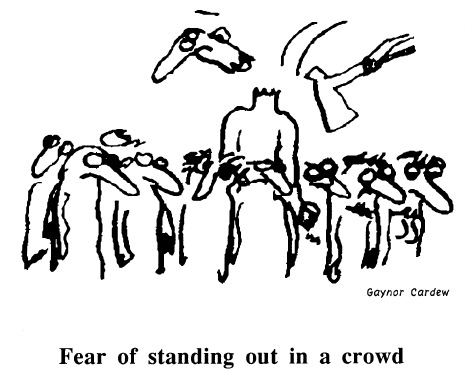
The way to overcome this is to emphasise collective actions, such as petitions, rallies, boycotts and strikes, rather than more individualistic protests. Indeed, social defence is based on a collective approach, so it should not depend on a great many individuals making valiant personal statements. But of course individual initiative is vital even for making collective actions effective.
* Perceptions of the crisis. If people do not perceive a repressive regime as illegitimate, few of them will take action against it, So, for example, if a repressive regime came to power by apparently constitutional means (such as by election, followed by draconian legislation), it would be much harder to organise effective resistance. Even in cases where a cause is just, illegal action (civil disobedience) against 'legal' regimes is frowned upon by many people.

There are several possible responses to this problem. One is continual effort to judge governments by moral and political grounds - such as their commitment to social justice and tolerance of dissent - rather than by formal legal grounds. Another is to develop the use of nonviolent action as a legitimate means for social protest even against 'enlightened' governments. Yet another is to push for local communities to have more say in their own affairs, so that 'the government' is not seen as the main arena for legitimate social change.
* Collaboration. It is quite possible that many prominent figures in the community - politicians, corporation executives, church leaders, judges - will collaborate with the regime, either openly or covertly. For example, well known figures may counsel caution, ask for the regime to be given 'a fair go', castigate the 'unruly masses' and pin blame on 'violent extremists'. (Brutal governments are seldom referred to as violent extremists.) Such collaboration provides the regime with valuable legitimation. This sort of behaviour has occurred under many ruthless regimes.
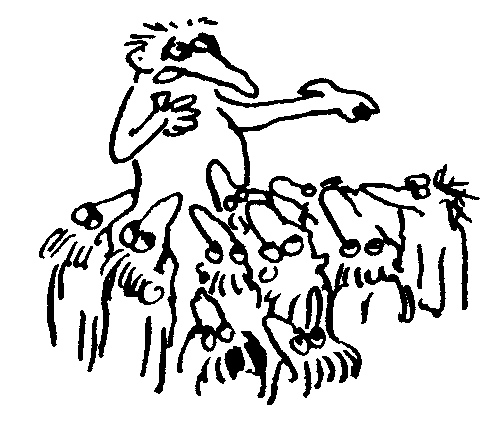
This danger highlights the importance to social defence of not depending on elites but rather building support at all levels within the community. It is important that people learn to be sceptical of the views of leaders and to evaluate the situation for themselves.
* Spies. Spying is another form of collaboration. It is prevalent under most repressive regimes. The very existence of spies is an inhibiting factor for the resistance: people become afraid to do or say anything that might get them into trouble.
Social defence planning should be based on the assumption that spies will be present in any public gathering or large meeting. One of the basic ways to overcome this is to make as much of the resistance - especially the principles and standard methods of resistance - completely open. Techniques such as rallies, petitions, boycotts and strikes by their nature are quite public. What can remain secret is the detailed initiatives of individuals and small groups, such as public servants sabotaging computer equipment or tradespeople sabotaging electricity or water supplies.
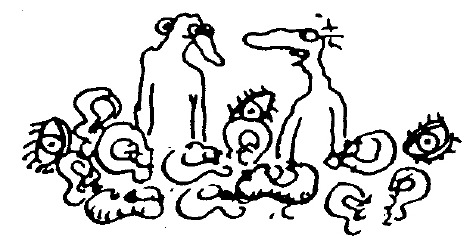
Only under the most repressive regimes does secrecy become imperative for routine activities. Yet even under Nazi occupation or in communist regimes, quite a degree of open opposition has been tolerated, simply because to repress this dissent would generate even more opposition. This is the dynamic of nonviolent action.
* Stress. Repressive regimes put people under enormous personal stress. Moral dilemmas and often day-to-day survival are acute problems. One danger to social defence is that people will react to stress by becoming violent, thereby undercutting the legitimacy of the nonviolent resistance. Another danger is that people will become demoralised.
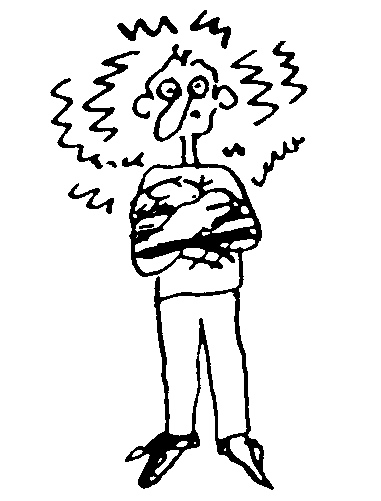
The dangers of stress point to the importance of mechanisms to provide mutual support. The pressure to perform tasks - communicating overseas, producing a leaflet, planning an occupation - needs to be balanced by efforts to provide emotional support. This might include opportunities to describe fears to sympathetic people, breaks from activism, and actions such as concerts and dinners designed more to promote solidarity than to directly challenge the regime. Keeping the resistance together and functioning is vital, and this means satisfying the needs of people for emotional support.
SUGGESTIONS FOR FURTHER ACTION
Individuals
* Learn more about social defence. A starting point for learning more about the history and thinking on social defence is the list of further reading. Some of the books and journals may be available from libraries and specialist bookshops. Others will need to be ordered. Group discussion with a few friends or fellow workers can be an enjoyable method of learning.
* Pass out information. There may be peace groups or individuals who would be interested in receiving written material about social defence or viewing the slide show. Another way to let people know about social defence is to include it in a letter-to-the-editor or in local church/union/sporting club newsletters. It may only be a few lines. If there is more space, a reprint of someone else's article on social defence may be possible.
* Resource inventories. An important part of nonviolent resistance is knowing what resources and skills are available in the community. A resource inventory of the equipment in your street, club or workplace would be a useful start. At the same time a list of skills could be compiled.
* Learn new skills. There are many skills that would be extremely useful to the resistance movement. These include skills such as vehicle repair, telex and short-wave operation, even forgery. Some people may already have access to relevant equipment through work and be able to take the opportunity to learn how to operate it.
Groups
* Studies of resistance movements. To learn more about how nonviolent action works, studies can be made of past and present campaigns and movements. This includes historical studies using newspapers and archives and talking to participants. It also includes 'current history', the study of present-day nonviolent action, including talking to people on all sides of the issue. It can also include participant study: getting involved in the movement but also studying what it does and how it succeeds or fails.
* Resource inventories. Groups can prepare lists of resources for nonviolent action. This includes equipment such as typewriters and short-wave radios, and also skills such as plumbing and public speaking. Preparing a resource inventory is a valuable exercise in itself, since it makes people aware of what resources and abilities they have at hand and their relevance to nonviolent resistance. It is also important to make sure that the information collected is available to those who can use it for social defence.
* Networks. An important part of any nonviolent resistance is the solidarity of the resisting community. Building links and making contacts among a wide range of people is valuable. One project would be to develop lists of contacts: an inventory of existing networks. Another project would be to foster cooperation and interaction, for example in a local neighbourhood or between different religious groups. This is the process of going beyond existing networks to build new ones.
* Self-reliance. Communities that are self-reliant are in a better position to resist a repressive regime. There are numerous ways to promote self-reliance:
- more local production and distribution of food;
- wider understanding of prevention of disease and self-help health care;
- spreading of abilities to repair goods;
- local networks for child care, support for the disabled, contact with the elderly and with different ethnic groups, etc.
* Direct promotion of social defence. Groups can distribute information about social defence, give talks, hold stalls, run training workshops, organise simulations, etc.
* Link social defence with social action. Feminists could link campaigns to oppose rape and sexual harassment with promotion of social defence. Workers could link campaigns for industrial democracy with the development of a social defence capability in the factory. Linking the promotion of social defence with campaigns for social justice, equality, environmental concern and other such causes is an important task.
Governments
* Promotion of awareness and discussion of social defence within the community. This could be done by newspaper, radio and television advertising as well as producing special leaflets, papers and films. Statements by government leaders would be reported in the media and help legitimise the concepts.
* Funding of research and curriculum development. Research can be undertaken both inside and outside universities and should be relevant to Australian situations. It includes collating the relevant knowledge of many groups in society. Courses can be run in schools, colleges and universities. Both research and teaching should be independent of government influence.
* Funding of social defence centres. These could develop and run courses and workshops, and provide trainers and consultants to work with different community and occupational groups. Such centres could also coordinate and encourage community groups to develop relevant strategies, as well as providing information to the public.
* Incentives for community groups. Groups within the community can develop their own ideas and publish information for their members. Groups can be funded to help them carry out activities listed in the above section on groups.
* Courses in specific skills. Free courses could be run for people to learn useful skills such as using short-wave radio.
* Encouragement of government employees. Special leave could be given to government employees for social defence training. Discussion could be promoted within the public service and research undertaken in each department to determine particular resistance options.
* Funding for equipment. Support could be given for mass production of cheap short-wave radios, conversion of factories so that workers could shut them down, local self-reliance in food and energy, greater decentralisation in production, and many other initiatives.
Government support would be a great advantage for coordination of social defence at a national level. But there is also the danger that governments may coopt social defence for its own purposes. For example the government could pay lip service to the idea, then integrate some small part of it into the existing defence structure and place its control under the military. We feel that it is essential that the community is involved at all stages and the necessary grassroots nature of social defence is not forgotten.
Australians are in a good position to play a leading role in promoting social defence. There are no immediate foreign threats and the country has a stable political and social system. This means that there is considerable scope to experiment with alternative approaches to defence. Social defence is one such approach that, unlike other alternatives that still rely on violence, offers the hope of undercutting the global military spiral.
FURTHER READING
Readings about social defence
Alternative Defence Commission, Defence Without the Bomb, London, Taylor and Francis, 1983. Includes a discussion of nonviolent resistance as part of British defence policy.
American Friends Service Committee, In Place of War, New York, Grossman, 1967. A short outline of how social defence might operate.
Anders Boserup and Andrew Mack, War Without Weapons: Non-violence in National Defence, London, Frances Pinter, 1974. A valuable study of the strategic basis of social defence.
Bulletin of Peace Proposals, volume 9, number 4, 1978, Articles on social defence.
Johan Galtung, Peace, War and Defense. Essays in Peace Research, Volume Two, Copenhagen, Christian Ejlers, 1976. Thought-provoking essays, including important ones on social defence.
Gustaaf Geeraerts (editor), Possibilities of Civilian Defence in Western Europe, Amsterdam, Swets and Zeitlinger, 1977.
Gene Keyes, 'Strategic non-violent defense', Journal of Strategic Studies, volume 4, number 2, June 1981, pages 125-151.
Stephen King-Hall, Defence in the Nuclear Age, London, Victor Gollancz, 1958. A classic discussion of social defence, with a strong anti-communist orientation.
Andrew Mack, 'The strategy of non-military defence', in Desmond Ball (editor), Strategy and Defence: Australian Essays, Sydney, Allen and Unwin, 1982, pages 148-169. The relevance of social defence to Australia.
Brian Martin, Uprooting War, London, Freedom Press, 1984. Ideas for promoting social defence at the grassroots as part of a strategy against war.
Theodore Olson and Gordon Christiansen, Thirty-one Hours, Toronto, Canadian Friends Service Committee, 1966. An account of a simulation of nonviolent resistance, with valuable lessons.
Adam Roberts (editor), The Strategy of Civilian Defence: Nonviolent Resistance to Aggression, London, Faber and Faber, 1967. A useful collection of readings, including critical views about social defence.
Adam Roberts, 'Civil resistance to military coups', Journal of Peace Research, volume 12, number 1, 1975, pages 19-36.
Gene Sharp, Social Power and Political Freedom, Boston, Porter Sargent, 1980. Essays, including ones on social defence.
Also worth reading
Virginia Coover, Ellen Deacon, Charles Esser and Christopher Moore, Resource Manual for a Living Revolution, Philadelphia, New Society Publishers, 1981. The standard reference for nonviolent action training, with much else besides.
Dave Foreman (editor), Ecodefense: a Field Guide to Monkeywrenching, Tucson AZ, Earth First! Books, 1985. The practicalities of sabotage against destroyers of wilderness, without hurting people.
George Lakey, Strategy for a Living Revolution, New York, Grossman, 1973. How to act towards nonviolent social revolution.
Gene Sharp, The Politics of Nonviolent Action, Boston, Porter Sargent, 1973. The classic treatment, giving numerous historical examples.
